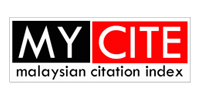Advancing COVID-19 Detection: High-Performance RNA Biosensing via Electrical Interactions
DOI:
https://doi.org/10.58915/ijneam.v17iJune.862Keywords:
Aluminium Interdigitated Electrode, Biosensor, RNA COVID-19, Selective, SensitiveAbstract
This research paper investigated the detection of COVID-19 using an Aluminum Interdigitated Electrode (Al-IDE) sensor based on electrical conductivity. The silanization process involved the functionalization step, employing (3-Aminopropyl) triethoxysilane (APTES), while the immobilization process was facilitated by the RNA Probe specific to COVID-19. To verify its specificity in detection, the functionalized biosensor was tested against single-base mismatches, non-complementary sequences, and complementary sequences. The physical characteristics of the Al-IDE biosensor were examined using both low-power microscopy (LPM) and high-power microscopy (HPM). Additionally, the morphological properties of the biosensor were assessed using atomic force microscopy (AFM). To assess its diagnostic potential, the biosensor's sensitivity was evaluated by exposing it to a range of complementary targets, spanning from 1 femtomolar (fM) to 1 micromolar (μM). The current-voltage (I-V) characteristics of the biosensor were meticulously analyzed at each stage of functionalization bare Al-IDE, silanization, immobilization, and hybridization. This I-V characterization was carried out using a picoammeter voltage source (Keithley 2450), Kickstart software, and a probe station. The results confirmed the biosensor's capability to effectively detect COVID-19 targets within the nanoampere concentration range, demonstrating its success in detecting specific COVID-19 targets at the nanoampere level.

















